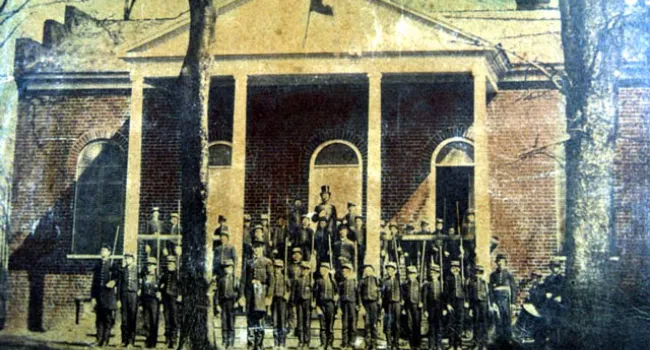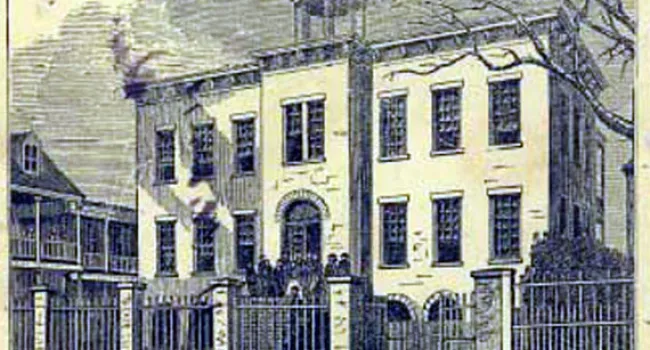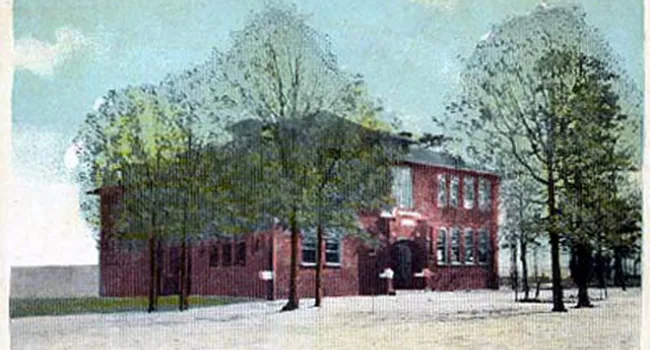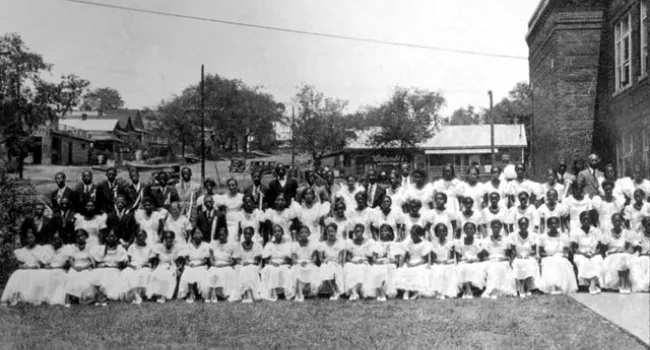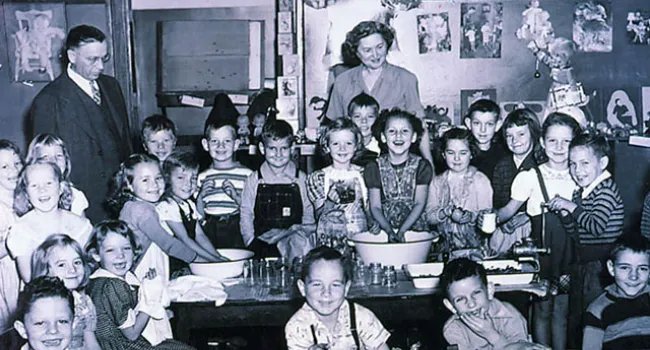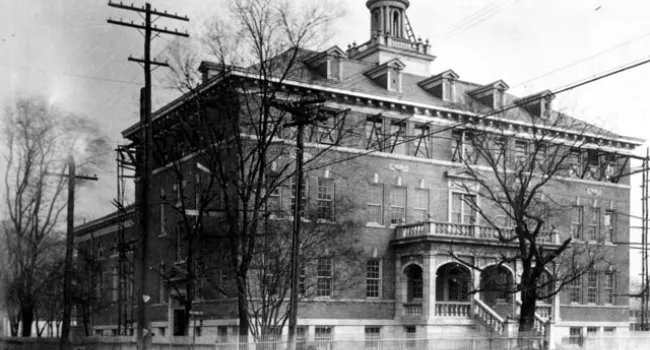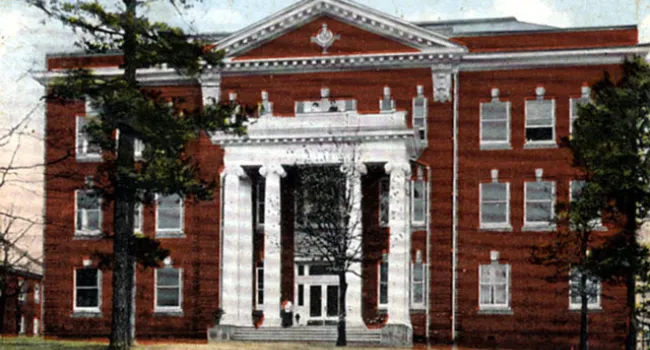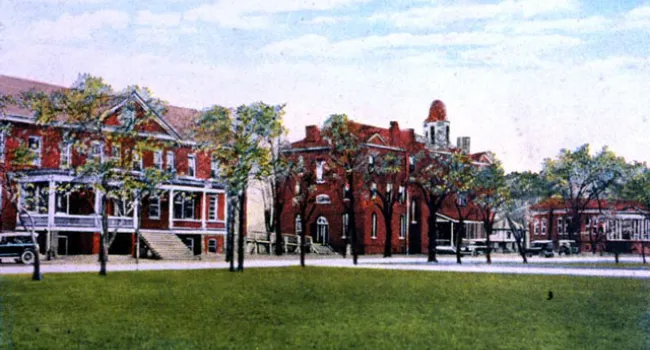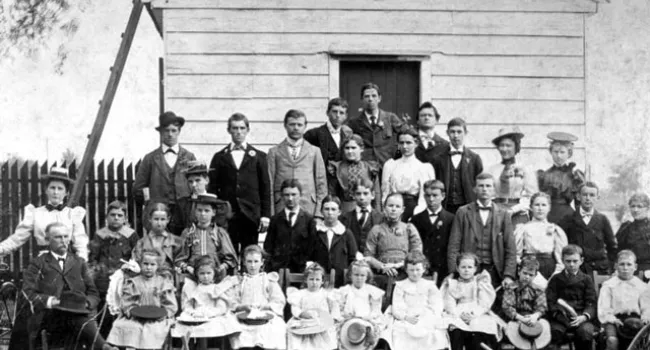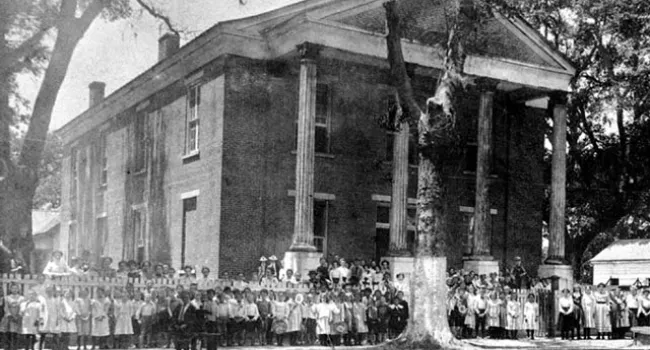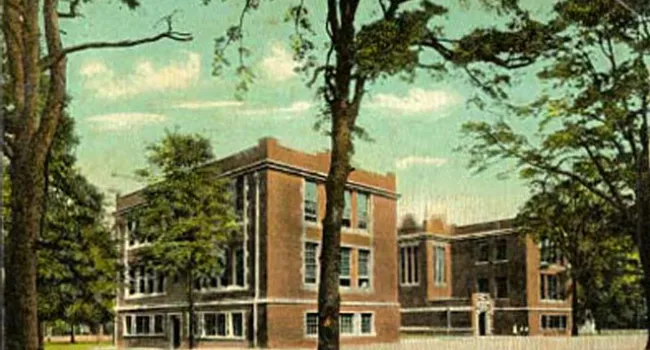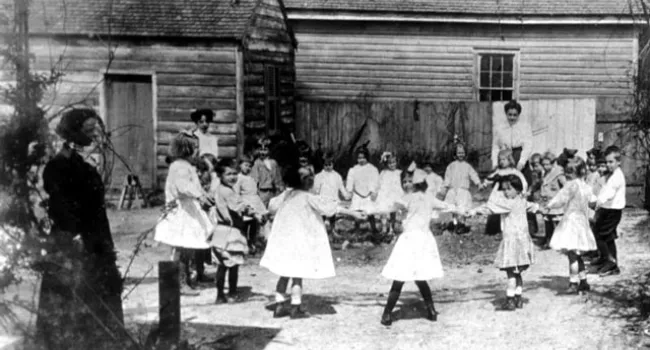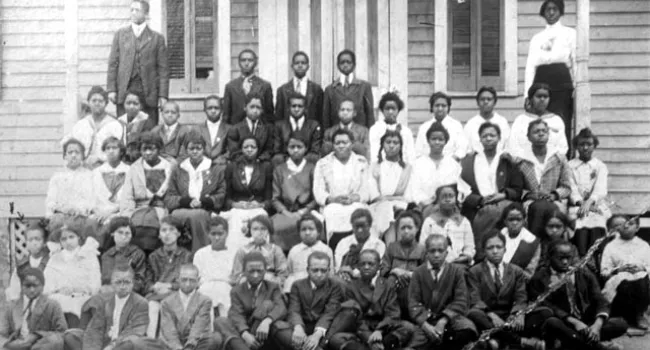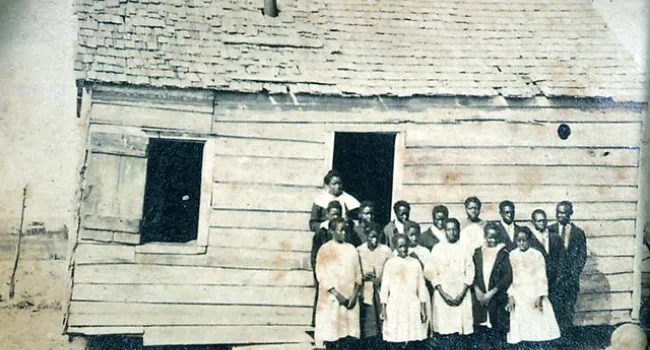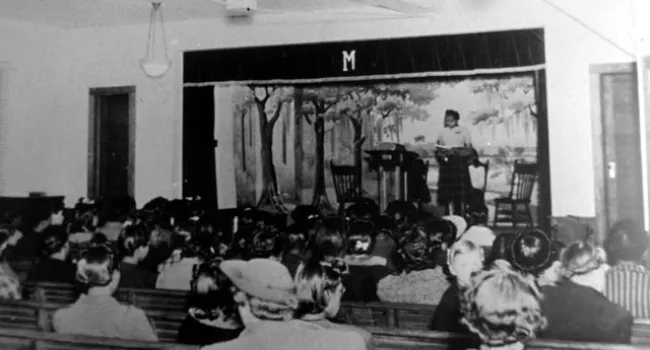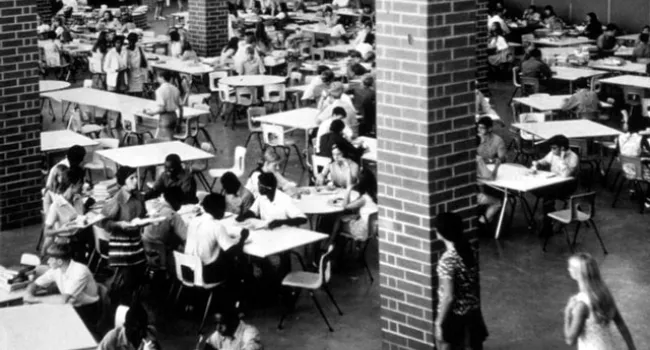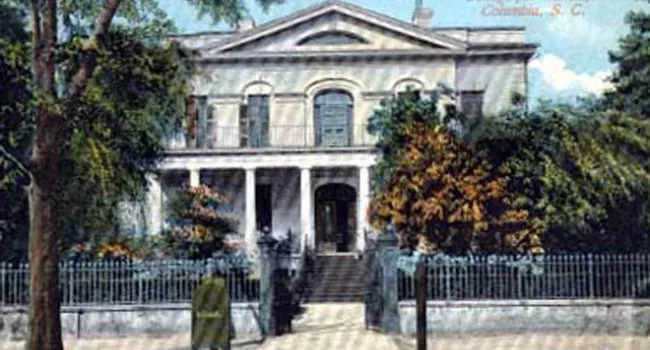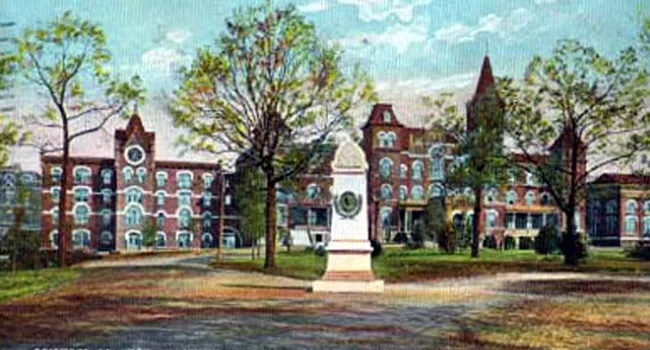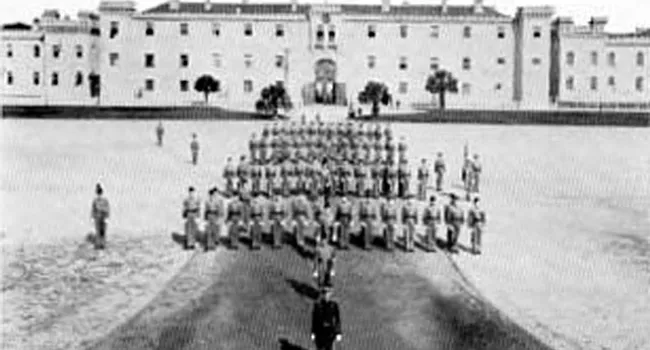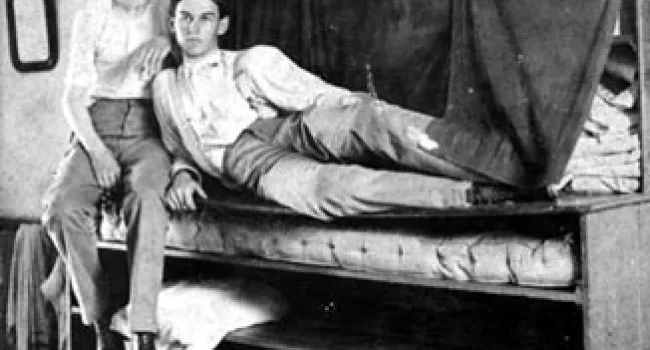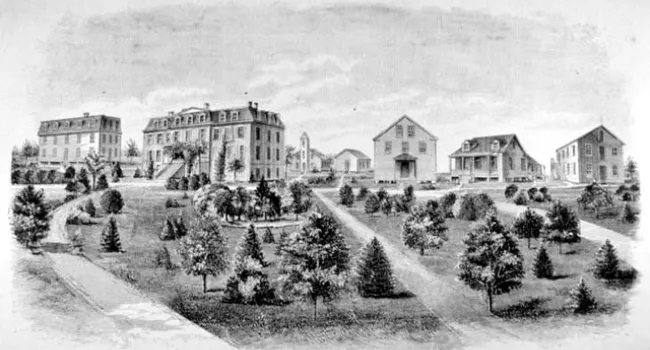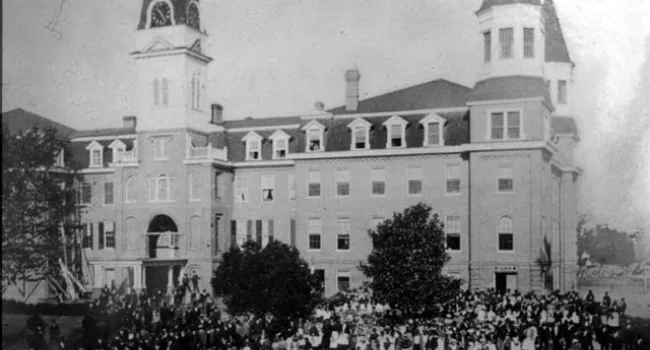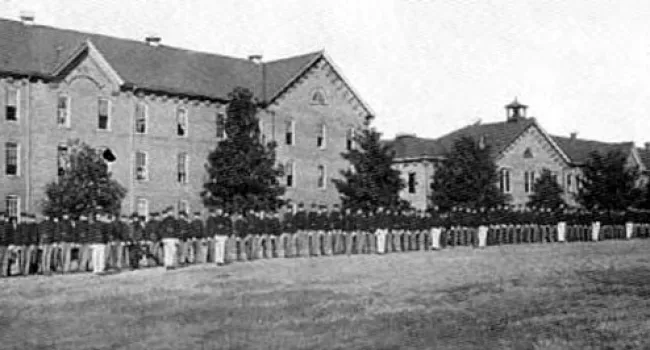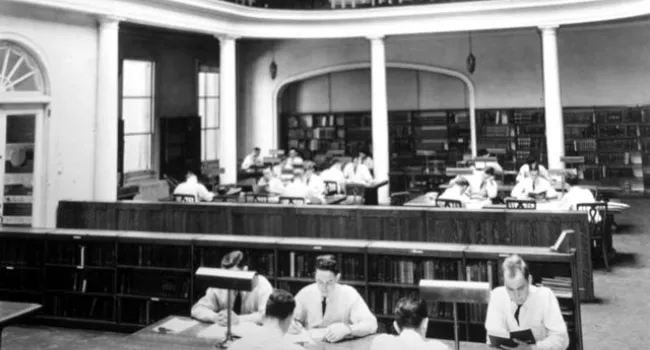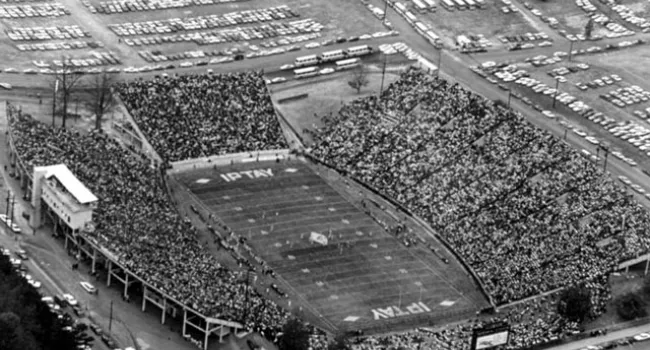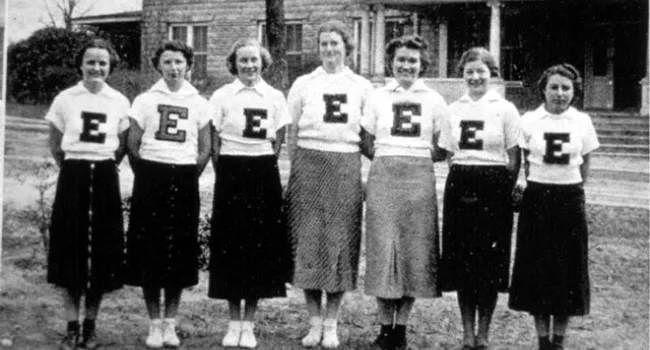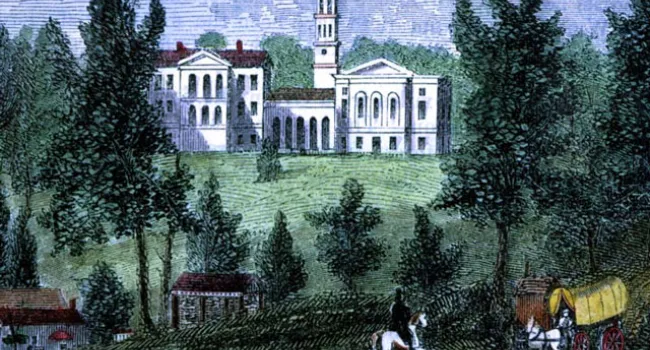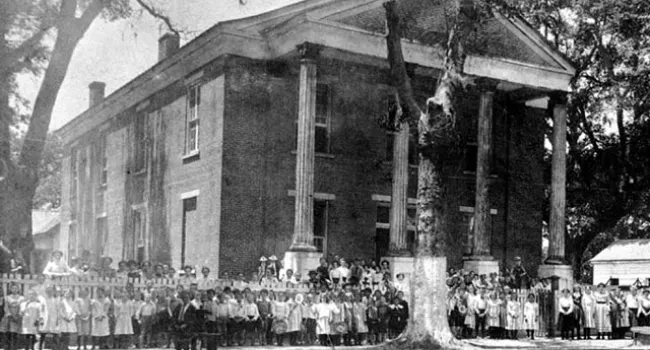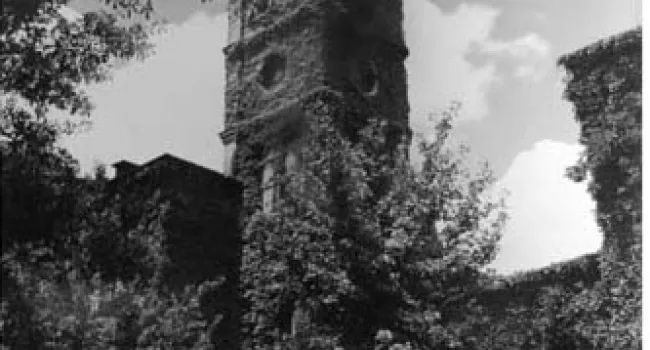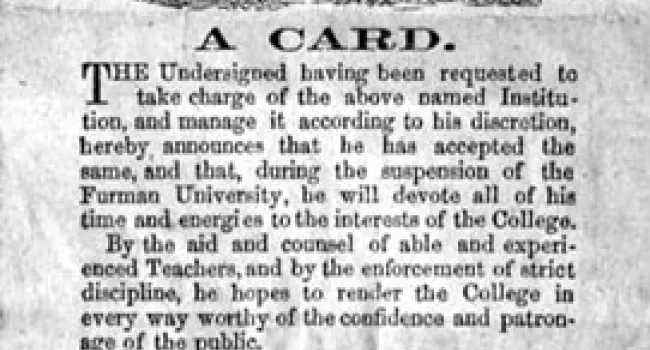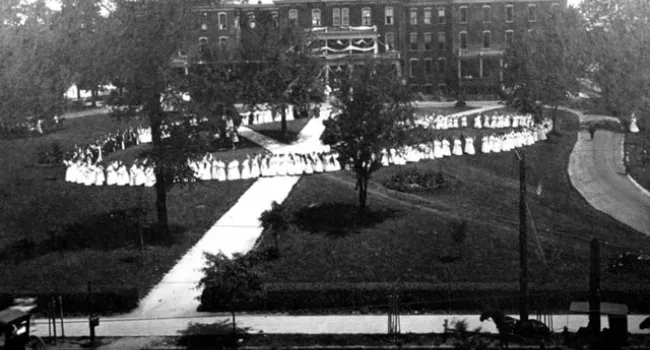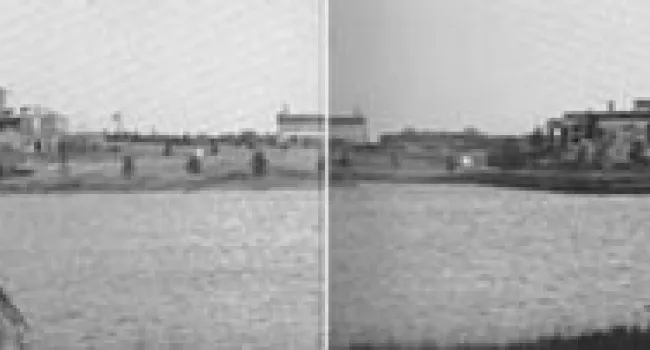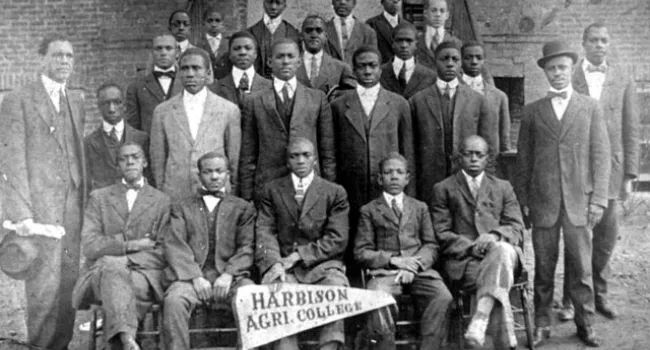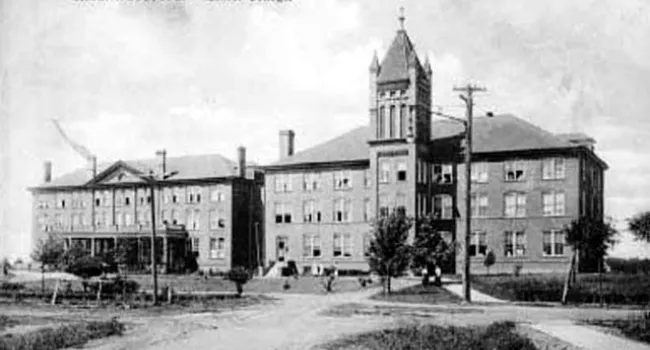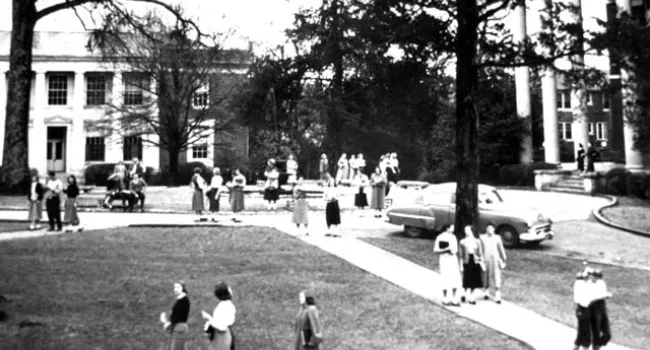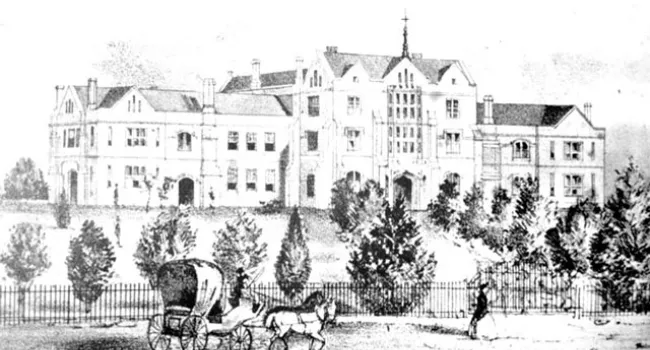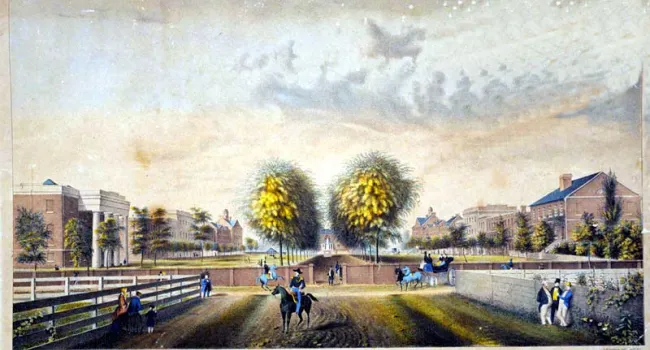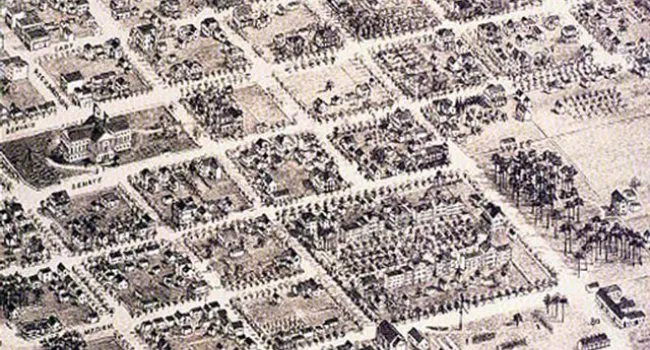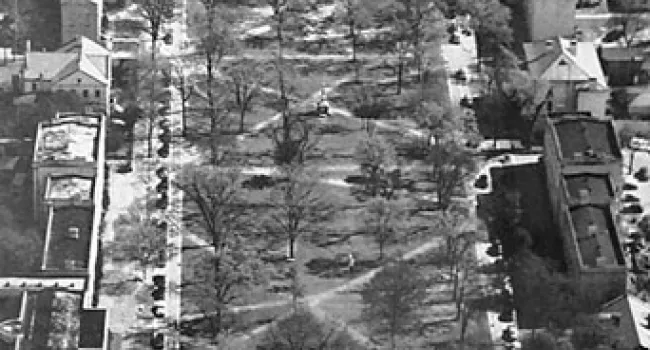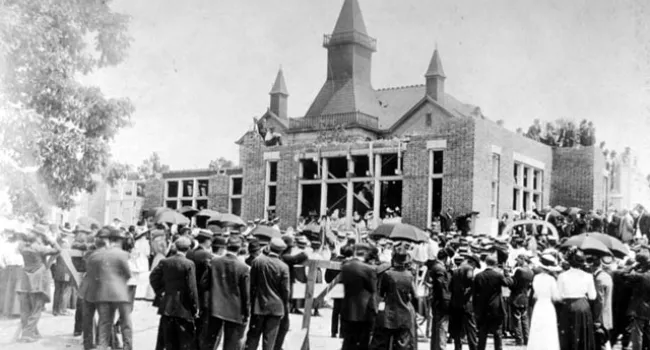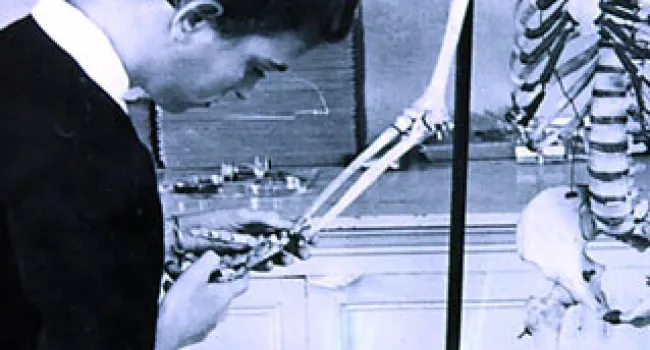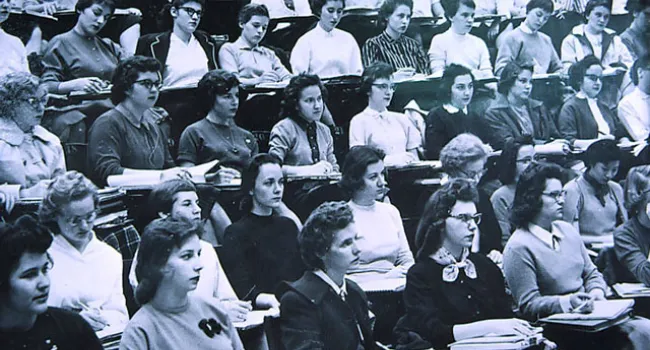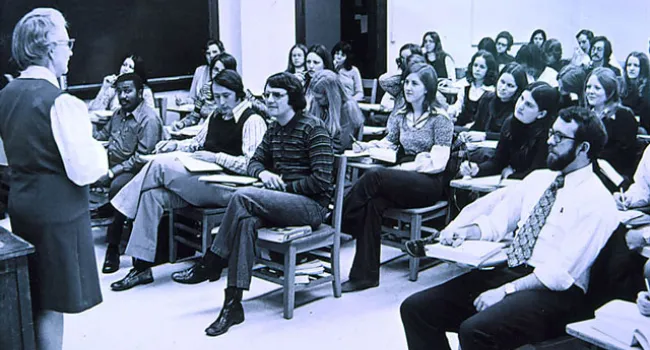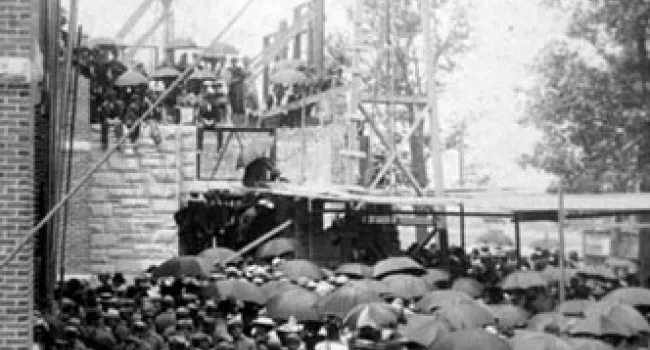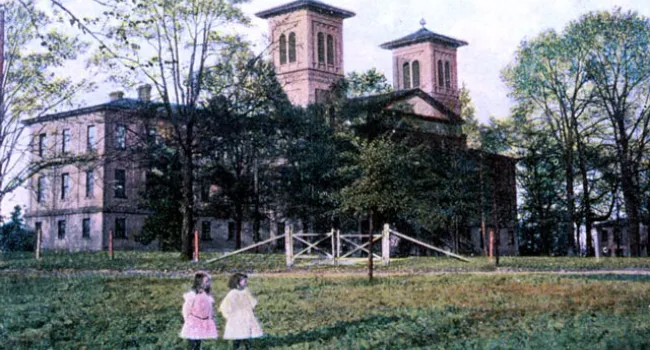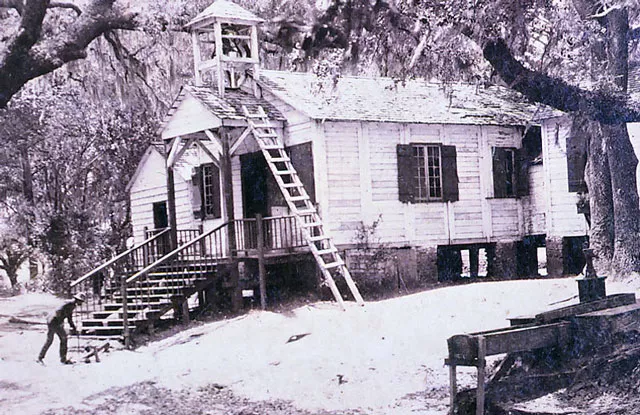
The original building of the Penn School photographed around 1890. The Penn School, located on St. Helena's Island, was the first school for freed African-Americans opened by northerners in the South. The most successful part of the "Port Royal Experiment," the school was founded in 1862 soon after Federal armies occupied the Beaufort area, and operated for more than 40 years by Laura Towne and Ellen Murray (see Ellen Murray) as representatives of the Philadelphia Port Royal Relief Committee. The first African-American teacher at the school was Charlotte Forten, who came in October of 1862. This small prefabricated schoolhouse, sent in 1864, was the first permanent building of the Penn School. From 1864 to 1900, the school expanded to serve the educational needs of African-Americans in the Sea Islands, including industrial arts as well as an academic curriculum. Between 1900 and 1948 it became the Penn Normal, Industrial, and Agricultural School, one of the better known schools for African-Americans in the South. It accepted its last class in 1948; in 1953, when the last class graduated, the task of educating African-American students on the islands was transferred to the Beaufort County School System. The school campus, designated as a National Historic District in 1974, is now the Penn Center, which operates a wide range of programs to preserve the vital African-American heritage of the Sea Islands.
From the Penn School Collection. Permission granted by Penn Center, Inc., St. Helena Island, SC.

